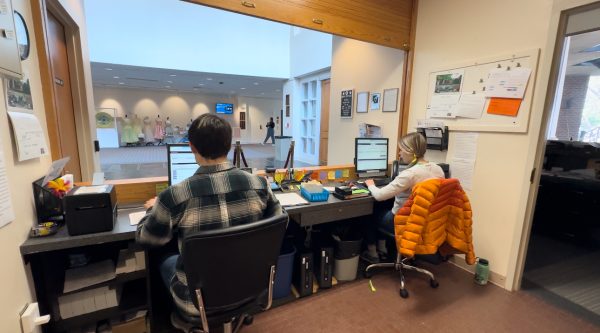Pre-med students say credit/no credit grading option hurts, not helps, their chances at medical school
Most medical schools prefer to see a letter grade, if possible
May 18, 2020
Students have until May 25 to decide if they’ll accept a visible grade for winter term classes or opt for a credit/no credit alternative. But students applying to medical schools feel that they don’t have much of a choice.
The university registrar’s office made the grading announcement via email on May 5, saying that “students can choose to request Credit/No Credit for one course, all courses, or no courses.”
Lisa Alty, head of the Health Professions Advisory Committee and chemistry professor, said that this hybrid method makes things tricky for pre-health students because most medical schools would prefer to see a letter grade on a transcript.
“Many of the medical schools are saying if this was the only grading option, like it is for us during spring term, then they’ll accept it,” Alty said. “But if a person gets to option to the credit/no-credit, [medical schools] are not as happy with it for the prerequisite courses.”
The Health Professions Advisory Committee is a faculty committee appointed by the provost to advise students on the path of graduate work in health-related fields.
The committee sent out an email to students in this discipline advising them against taking credit for a course.
“Should you choose to have a prerequisite course graded Credit/No Credit during Winter term, you will have to retake the course for a grade in order for it to meet the prerequisite requirements,” the email reads.
Retaking a course is complicated by the fact that these students will only be admitted after everyone who hasn’t yet taken the course is registered. This means that first-year and transfer students will be admitted to a course before retakers. Students who want to repeat a course will have to risk not getting a seat.
Alty said that for these reasons, very few pre-health students are choosing the credit/no credit option.
James Ricks, ‘21, a student on the pre-med track, said he felt that taking a class for credit was not even something he could consider.
“The credit/no credit option is really less of an option if you’re taking classes that you have to take to get into medical school,” he said, “which means that students on the premed track who are in any number of situations are still expected to perform to a standard that may not be realistic.”
Ricks said he recognized some leeway, like the ability to explain a dip in grades during the pandemic in a medical school application essay. But he said it is still up to the school itself to be receptive of this.
“It’s my opinion that the university could do more to make sure that students can make their wellbeing the priority rather than having to potentially sacrifice that for the continuation of their high-achieving grades,” Ricks said.
One thing the university could have done, Ricks said, was make the entire semester credit/no credit and remove the option for a visible letter grade. Even though it was the tail-end of the semester, Ricks said there were still several unit tests and a final exam for many students.
Especially in his discussion-based classes, like medical ethics, Ricks said online learning presented a challenge in maintaining the quality of discussion.
Alty also emphasized difficulties, especially teaching lab classes online.
Alty said the lab instructor for her winter term chemistry course, Professor Donna Smith, had to create fake data for students to analyze and answer questions about. Alty said the most challenging aspect of her part of the course was distance from her students.
“This course meets four days a week in lecture and four hours a week in lab,” she said. “So we’re together eight hours a week and then, boom, we weren’t.”
But on campus, the end of the lab is usually the best part.
“I think that by the time we get to that part of the course, we’re that close to the end, and everybody kind of enjoys their lab time,” Alty said. “They know what they’re doing, they’re confident, it’s a pretty good time.”
Alty said she advised her students to make their decision about grading based on the stance of the medical schools they are considering. But for the most part, the answer is simple.
“It’s just not to the students’ advantage in terms of keeping all their options open to opt to take the credit/no credit grade,” she said.













